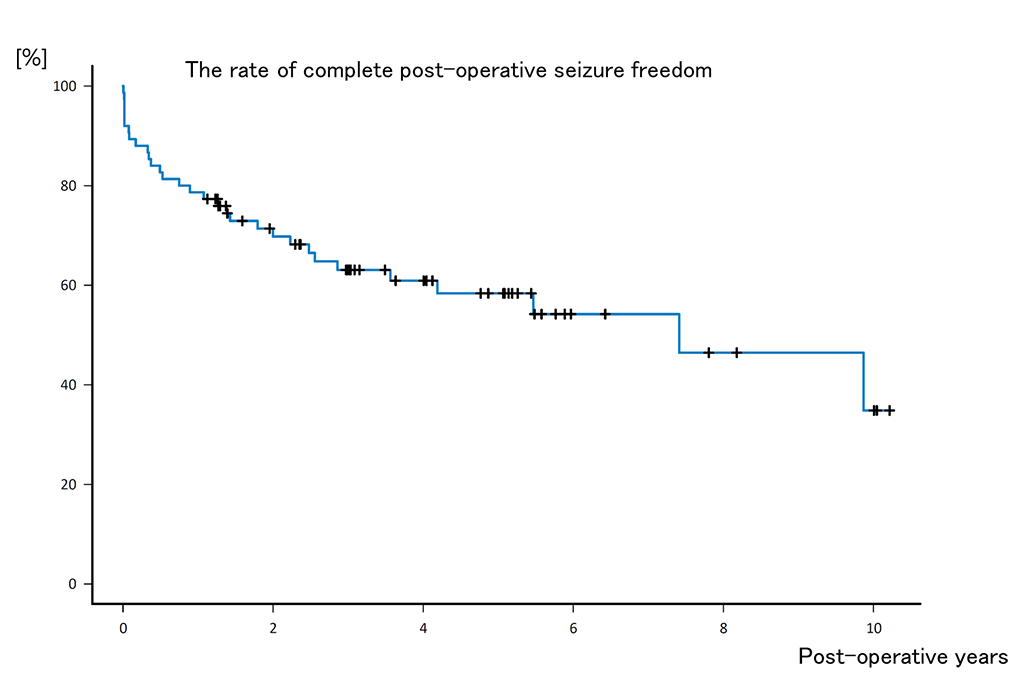A research group consisting of Masaki Iwasaki, Director of Neurosurgery, National Center Hospital, National Center of Neurology and Psychiatry (NCNP), Eiji Nakagawa, Director of the Epilepsy Center of the NCNP, and Hisateru Tachimori, Director of the Translational Medical Center of the NCNP, announced on August 12 that by analyzing 75 patients with epilepsy who underwent surgery under the age of 3 years, they had revealed that surgical methods to achieve seizure control contributed to subsequent good postoperative development. The results were published in the international scientific Journal of Neurosurgery, Pediatrics.
Surgical treatment is a commonly used intervention for epilepsy where drug treatment is not effective (drug-resistant epilepsy). Early surgical treatment is recommended for children with developing brains, as repeated seizures, the associated electroencephalogram (EEG) abnormalities, and drug treatment are likely to cause intellectual disability. In particular, large cortical dysplasia of the cerebrum (incorrect development of the outer layer of the brain), such as hemimegalencephaly, causes drug-resistant epilepsy shortly after birth, and there are many cases in which surgery is performed before the age of 1 year. It has been reported that craniotomy in infants and toddlers is more invasive than that in adults and that the risk of developing complications such as hydrocephalus after surgery is high, with approximately 20% of patients requiring additional treatment for complications. However, there have been no reports of large-scale examinations of patient development regarding the effectiveness of early epilepsy surgery for infants.
To clarify this issue, the researchers investigated the impact of early surgery on the subsequent development of 75 patients under the age of 3 years who underwent surgical treatment for epilepsy at the NCNP Epilepsy Center between 2006 and 2009. The group specifically looked at the impact of five factors on the developmental index in the first year after surgery, and investigated via multiple regression analysis the following areas: (1) preoperative development quotient (DQ), (2) postoperative seizure disappearance, (3) surgery type, (4) epilepsy cause, and (5) surgical complications. In the target population, most patients underwent surgery 3-4 months after birth, with an average age of 12 months, of which 27 had undergone hemispherotomy.
One year after the operation, 62 (82.7%) patients had no epileptic seizures. The proportion of patients who did not have epileptic seizures even once after surgery was 79% in 1 year after surgery, 70% in 2 years (62), and 58% in 5 years (32), indicating a positive treatment course. The average number of antiepileptic drugs taken by patients at the time of surgery was 2.2, decreasing to an average of 1.9 for patients 1 year after surgery and 1.3 for patients 5 years after surgery. Approximately 30% of patients had discontinued drug treatment entirely because of complete seizure resolution after surgery. Although there were no deaths from surgery, temporary complications occurred in 19 patients (13 hydrocephalus) and additional treatment was given.
As a result of multiple regression analysis, it was found that the developmental quotient in the first year of surgery was affected by the preoperative developmental quotient and the disappearance of epileptic seizures, and even if hydrocephalus occurred, its effect was small. If a DQ of 100 indicates a healthy individual, the mean DQ of patients that underwent surgery was 50-70. However, because these patients already had large brain lesions that caused epilepsy, these results were considered reasonable. Even if there is a risk of hydrocephalus, early infant surgery is more effective in treating epilepsy and can reduce drug treatment. After this study it has become evident that the benefits outweigh the risks.
The group is aiming to develop molecule-targeted drugs in the future. Dr. Iwasaki said, "This study was clinically based. All patients were under 3 years old. The researchers proceeded with the study using data for each cause of epilepsy, such as hemimegalencephaly. Regarding surgery, we actively introduced coagulation treatment without craniotomy, and would like to report further results in the future. We also performed gene analysis using surgical specimens from epilepsy surgery. There are few reports on the relationship between genotype and clinical information such as diagnostic imaging, and we aim to establish the accurate preoperative diagnosis through genetic analysis. In the future, we hope to gain insights that will lead to the development of molecule-targeted drugs for epilepsy. "

Credit: NCNP
This article has been translated by JST with permission from The Science News Ltd.(https://sci-news.co.jp/). Unauthorized reproduction of the article and photographs is prohibited.




